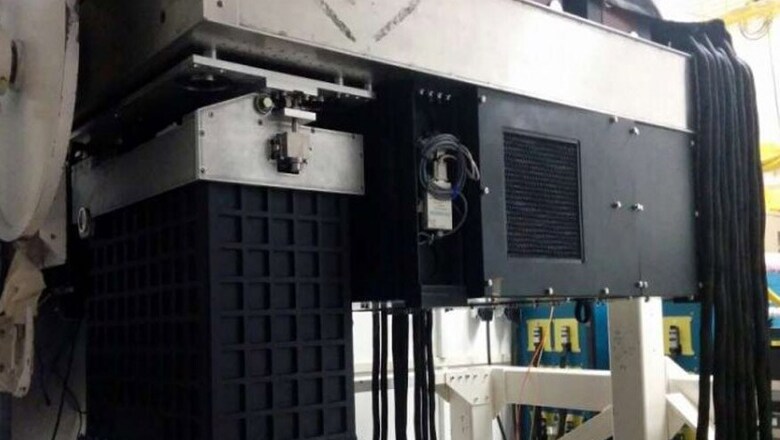
views
Scientists have developed the world's largest superconducting camera that can spot planets around stars near our solar system. Distinguishing that planet's light from its star can be problematic, researchers said. The team from California Institute of Technology and Jet Propulsion Laboratory in the US created a device named DARKNESS (the DARK-speckle Near-infrared Energy-resolved Superconducting Spectrophotometer), the first 10,000-pixel integral field spectrograph designed to overcome the limitations of traditional semiconductor detectors. It employs Microwave Kinetic Inductance Detectors that, in conjunction with a large telescope and an adaptive optics system, enable direct imaging of planets around nearby stars.
Also Read: Xiaomi Redmi S2 A Budget Smartphone With Dual Camera, Face Recognition to Launch in India
"Taking a picture of an exoplanet is extremely challenging because the star is much brighter than the planet, and the planet is very close to the star," said Benjamin Mazin, from the University of California, Santa Barbara in the US. DARKNESS is an attempt to overcome some of the technical barriers to detecting planets. It can take the equivalent of thousands of frames per second without any read noise or dark current, which are among the primary sources of error in other instruments. It also has the ability to determine the wavelength and arrival time of every photon. This time domain information is important for distinguishing a planet from scattered or refracted light called speckles.
Also Read: Samsung 20-20 Carnival Sale: Discounts, Cashbacks And More on Samsung Smartphones on Amazon India
"This technology will lower the contrasting floor so that we can detect fainter planets," Mazin said. "We hope to approach the photon noise limit, which will give us contrast ratios close to 10-8, allowing us to see planets 100 million times fainter than the star," he said. "At those contrast levels, we can see some planets in reflected light, which opens up a whole new domain of planets to explore. The really exciting thing is that this is a technology pathfinder for the next generation of telescopes," he added. Designed for the 200-inch Hale telescope at the Palomar Observatory near San Diego, California, DARKNESS acts as both the science camera and a focal-plane wave-front sensor, quickly measuring the light and then sending a signal back to a rubber mirror that can form into a new shape 2,000 times a second.
This process cleans up the atmospheric distortion that causes stars to twinkle by suppressing the starlight and enabling higher contrast ratios between the star and the planet. During the past year and a half, the team has employed DARKNESS on four runs at Palomar to work out bugs. The researchers will return in May to take more data on certain planets and to demonstrate their progress in improving the contrast ratio.
Also Watch: Tech and Auto Show | EP36 | Ford Freestyle, Yamaha YZF-R15 V3.0 & More




















Comments
0 comment